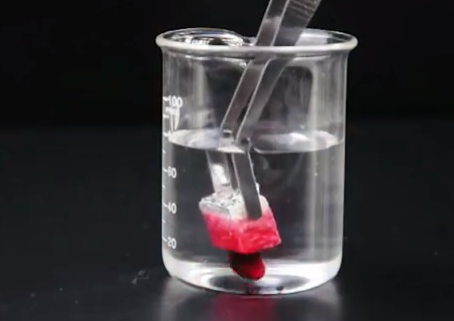Wood Sponge Soaks up Oil from Water (Video)
Published on by Water Network Research, Official research team of The Water Network in Technology
Sponges made from wood can selectively absorb oil, and then be squeezed out for reuse.
Oil spills and industrial discharge can contaminate water with greasy substances. Although it’s true that oil and water don’t mix, separating and recovering each component can still be challenging. Now, researchers have created sponges made from wood that selectively absorb oil, and then can be squeezed out and used again. They report their results in ACS Nano.

Image Source: YouTube Video Print Screen (Find the Video Below)
Over the years, scientists have developed numerous techniques to clean up oily water, from gravity separation to burning to bioremediation. But many of these methods suffer from limitations, such as low efficiency, secondary pollution and high cost. More recently, researchers have explored 3D porous materials, such as aerogels or sponges, based on various building blocks including synthetic polymers, silica or cellulose nanofibers. However, these are often difficult to fabricate, lack mechanical robustness or are made from nonrenewable, nondegradable materials. Xiaoqing Wang and colleagues wanted to develop a sponge made from wood — a renewable resource — that would absorb oil and tolerate repeated squeezing without structural failure.
The team made the wood sponge by treating natural balsa wood with chemicals that removed lignin and hemicellulose, leaving behind a cellulose skeleton. They then modified this highly porous structure with a hydrophobic coating that attracted oil, but not water. When placed in a mixture of water and silicone oil, the wood sponge removed all of the red-dyed oil, leaving clean water behind. Depending on the oil tested, the sponge absorbed 16¬ to 41 times its own weight, which is comparable to or better than many other reported absorbents. In addition, the sponge could endure at least 10 cycles of absorption and squeezing. The researchers incorporated the wood sponge into an oil-collecting device in the lab that continuously separated oils from the water surface.
The authors acknowledge funding from the National Key Research and Development Program of China and the National Natural Science Foundation of China.
Source: ACS
Media
Taxonomy
- Treatment
- Treatment Methods
- Chemical Treatment
- Decontamination
- Oil Water Separation
- Decontamination
- Wastewater Treatment
- Contaminant Removal
- Produced Water From Oil & Gas Industry
- Oil Spill Treatments
- water treatment
- Oil & Gas